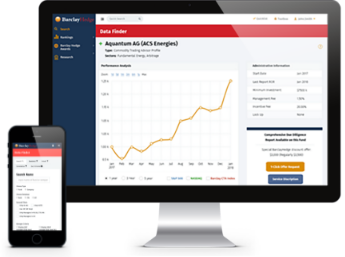Relative-value arbitrage is an investment strategy that seeks to take advantage of price differentials between related financial instruments, such as stocks and bonds, by simultaneously buying and selling the different securities—thereby allowing investors to potentially profit from the “relative value” of the two securities.
Before we explain that, let’s review the concept of arbitrage. Arbitrage, at its most simplest, involves buying securities on one market for immediate resale on another market in order to profit from a price discrepancy. But in the hedge fund world, arbitrage more commonly refers to the simultaneous purchase and sale of two similar securities whose prices, in the opinion of the trader, are not in sync with what the trader believes to be their “true value.” Acting on the assumption that prices will revert to true value over time, the trader will sell short the overpriced security and buy the underpriced security. Once prices revert to true value, the trade can be liquidated at a profit. (Remember, short selling is simply borrowing a security you don’t own, selling it, then hoping it declines in value, at which time you can buy it back at a lower price than you paid for it and return the borrowed securities.) Arbitrage can also be used to buy and sell two stocks, two commodities and many other securities.
Relative-value arbitrage is also referred to as “pairs” trading. That’s because with relative-value arbitrage, an investor invests in a pair of related securities. Ideally, these securities will have high correlations, meaning they will tend to move in the same direction at the same time.
Stocks in the same industry that have trading histories of similar lengths are often used in relative-value arbitrage. Automotive stocks GM and Ford are good examples, as are pharmaceutical stocks Wyeth and Pfizer. But indices, such as the S&P 500 Index and the Dow Jones Utilities Average, can also be used in relative-value arbitrage. So can index-tracking stocks, such as the QQQQ (which tracks the Nasdaq Composite Index) or the SPY (which tracks the S&P 500 Index). In fact, when it comes to choosing securities, the sky is the limit: Relative-value arbitrage works not only with stocks, but also with futures, options, currencies and commodities.
Whatever securities are used, when the prices of the two securities diverge—meaning one security rises in value and the other security falls in value—the relative-value arbitrageur buys one security and shorts the other. When the prices converge again, the relative-value arbitrageur closes the trade.
Because relative-value arbitrage requires securities to be correlated in price, it is typically used in a sideways market, which is a market that is neither rising nor falling, but trading within a specific range. Whether a market will continue to stay within a specific range can be difficult to evaluate, however, as markets can change direction quickly. So, relative-value arbitrage requires the knowledge and skill to evaluate not just individual securities, but the markets as well.
Because of these risks, large institutional investors—such as hedge funds, private equity firms and investment banks—are the major user of relative-value abitrage.
In summary, then, while relative-value arbitrage may help increase returns in difficult market environments, such as sideways markets, it requires significant expertise, and is best used by sophisticated investors who are willing to accept its risks.
Get comprehensive and up-to-date information on 6100 + Hedge Funds, Funds of Funds, and CTAs in the Barclay Global Hedge Fund Database.


